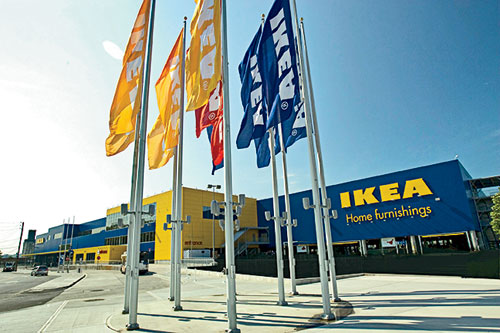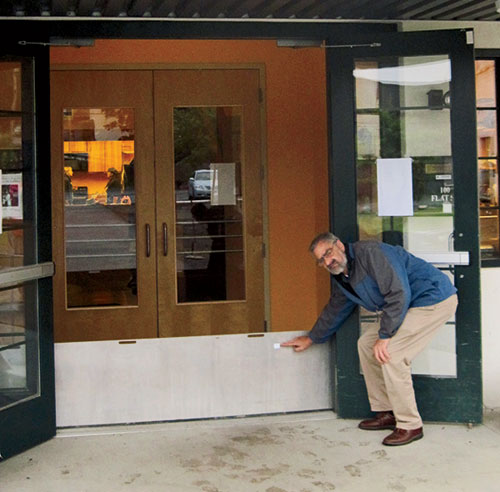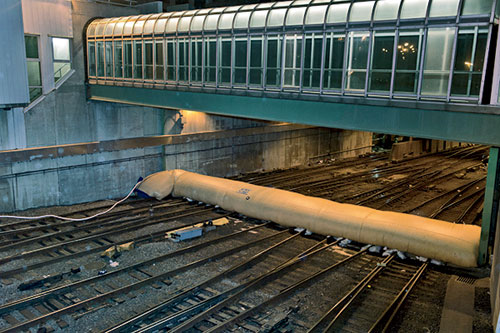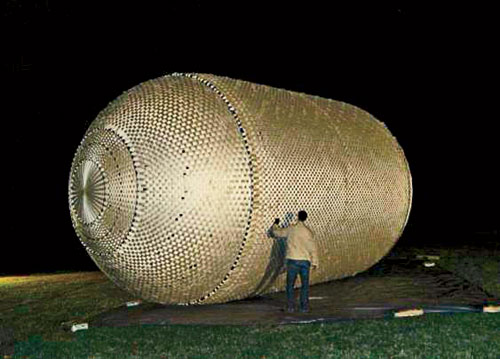Bracing for Climate Change
There are currently no LEED points for adapting to climate change, but the report highlights commonalities between sustainable design and resilient building. Strategies such as energy efficiency and increasing a building's durability and longevity can contribute to both green design and climate adaptation. “After studying the issue we concluded that it's time for green-building professionals to anticipate the consequences of changing conditions on project performance—particularly where only historic information is used to design systems or components,” says Chris Pyke, USGBC vice president of research and a coauthor of the study.
In calculating the energy needs of buildings, the report promotes looking at projected climate data that is adjusted for future climate change. As projections are refined, warmer temperatures could require reconfiguring of heating and air-conditioning systems. Warmer areas of the country, like California and Texas, could see a dramatic increase in energy demands. “The last thing you want to see is just doubling the capacity of air-conditioning on buildings to compensate for future heat gain,” says Nicholas Rajkovich, a University of Michigan researcher for the study.
| Wet Floodproofing | ||
The strategy of wet floodproofing assumes that a building will flood occasionally. In the case of New York City, components such as electrical panels and fan motors can be ruined or disabled when they come in contact with water, especially corrosive saltwater. One measure that would improve resilience is to zone building systems and essential infrastructures so that vulnerable mechanical and electrical equipment is above the projected floodplain. Because parking is located on the ground floor of the IKEA in Red Hook, Brooklyn, with retail units above, the store was unaffected by Hurricane Sandy. |
| Floodgates | ||
As the remnants of Hurricane Irene slammed the Northeast with torrential rains in 2011, the management of the New England Youth Theatre in Brattleboro, Vermont, decided to install its 20-inch-high floodgates at the exterior doors. The gates were required by the city's floodplain ordinance when the organization bought the building in 2006. Irene's water rose to within inches of the top of the gates, but the theater sustained only minimal damage to its carpet. These low-tech gates are simple panels that slide into brackets and are then fastened to make a tight seal. |
| Water-Filled Bladder | ||
A notable failure in this department was the huge water-filled bladder used to protect Penn Station on Manhattan's West Side. The device, which stretched across 90 feet of railroad tracks and stood 5 feet tall, was filled with 32,000 gallons. But when Sandy's surging waters came rushing in, the bladder, weighing approximately 133 tons, was pushed aside and torn asunder. |
| Inflatable Plug | ||
New York City is exploring more high-tech solutions for its infrastructure, such as an enormous inflatable plug that would fill subway tunnels like a giant wine-bottle stopper. The Department of Homeland Security's Science and Technology Directorate created the plug to contain flooding or dangerous gases in tunnels. Measuring roughly 32 feet long with a diameter of 16 feet, the plug can be filled with air or water in minutes to quickly seal off a section of tunnel. It is currently undergoing testing. |













